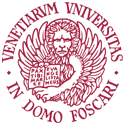TOWARD NEXT GENERATION OF BIOSENSING PLATFORMS: INTEGRATING MOLECULAR RECOGNITION AND NANOSTRUCTUREARCHITECTURES WITHIN OPTO-ELECTRONIC DEVICES
- Academic year
- 2020/2021 Syllabus of previous years
- Official course title
- TOWARD NEXT GENERATION OF BIOSENSING PLATFORMS: INTEGRATING MOLECULAR RECOGNITION AND NANOSTRUCTURED ARCHITECTURES WITHIN OPTO-ELECTRONIC DEVICES
- Course code
- PHD120 (AF:338315 AR:179514)
- Modality
- On campus classes
- ECTS credits
- 8
- Degree level
- Corso di Dottorato (D.M.45)
- Academic Discipline
- CHIM/01
- Period
- 2nd Semester
- Course year
- 1
- Where
- VENEZIA
Contribution of the course to the overall degree programme goals
Particular attention will be given to issues and challenges related to current biosensing platforms and researches devoted to overcoming them by employing specific (nano-)materials, nanostructured architectures, methodologies.
Newly developed receptors and labelling systems will be discussed in-depth.
Electrochemical and optical techniques will be considered in view of developing next-generation devices capable of acquiring two independent outputs or enabling a simultaneous detection strategy.
Expected learning outcomes
i) Acquire knowledge concerning the development of biosensing platforms and related issues with respect to specific applications
ii) Acquire knowledge of the basic principles of electrochemical, optical and bioanalytical techniques, employed in biosensing.
iii) Understanding the innovative role that nanotechnologies and nanomaterials are playing in the development of biosensing platform.
2. Ability to apply knowledge and understanding
i) Understanding which methodologies should be taken into account to optimize the use of biomolecules as analytical reagents to devise a reliable biosensor.
ii) Capability to evaluate which bioanalytical method is the most suitable to solve a specific bioanalytical problem, such as the recognition and the quantitative determination of molecules of biological and medical interest.
3. Ability to judge (depending on the in-depth analysis of the subject matter during the course)
i) Evaluate comparatively the effectiveness of different analytical strategies to choose the most suitable method for qualitative and quantitative analysis of biomolecules or molecules of biological and medical interest.
ii) Develop critical skills in the evaluation of the analytical performances of the methods based on (or devised for) molecules of biological, biotechnological and medical interest.
4. Communication skills
i) Learn the use of the correct scientific terminology of the physical and bioanalytical chemistry.
ii) Improve the oral communication skills by discussing (5-10 min) with the other students and the teacher a scientific article related with the course and suitably chosen through bibliographic and electronic sources (see next point 5).
5. Learning skills
i) Demonstrate to have acquired the principles and concepts on the topics covered by the teacher during the class by implementing the learning process through bibliographic and electronic sources.
Pre-requirements
Contents
- Biosensors in brief: fields of applications (with particular emphasis on precision medicine, while considering both diagnostics and therapeutic monitoring), analytes, receptors and transductors.
- Receptors: enzymes, antibodies, nanobodies, aptamers, peptides.
- Labeling systems (when necessary): redox and fluorescent probes.
- Electrochemical methods: recalling working principles of the main technique (in particular, amperometry and voltammetry).
- Introduction to electrogenerated chemiluminescence (ECL).
- Optical techniques: surface plasmon resonance (SPR), fluorescence.
- Materials employed as transducers or labeling systems: gold (nano)film, nanoparticles, carbon nanomaterials (e.g. graphene, nanotubes, carbon dots), silicon nanowires, conductive glass.
Part II
- Engineering a device: sensors’ array (analyte quantification: single or multiplexing detection?), sample volume and sample pre-treatment (e.g. whole blood), microfluidics.
- Sensor arrays by photolithography and electron- beam lithography.
- Screen-printed electrodes (SPEs).
- Field-effect transistors (FETs).
- Coupling techniques: can optical and electrochemical systems work together, perhaps simultaneously?
- Conclusions and perspectives: what next?
Referral texts
A. J. Bard, L. R. Faulkner. Electrochemical Methods. Fundamentals and Applications. 2nd ed. New York City: Wiley, 2000.
A. J. Bard. Electrogenerated Chemiluminescence. New York City: Marcel Dekker, 2004.
N. Sojic. Analytical Electrogenerated Chemiluminescence. London: Royal Society of Chemistry, 2020
D. L. Nelson, M. M. Cox. Lehninger – Principles of Biochemistry. 7th ed., New York City: Macmillan Education, 2017.
Lecture notes.
Assessment methods
The oral exam generally lasts approx. 30 minutes, depending on the clarity and appropriateness of the answers to the questions.
Type of exam
Teaching methods
Further information
1. Sustainability.
The use of biosensors for analytical purposes is certainly more sustainable than classical methods of analysis since it allows: i) to drastically reducing the use of toxic and polluting reagents; ii) to lowering the volumes of both samples and reagents (and, therefore, reducing the cost and problems related to waste disposal); iii) to using mild operative conditions (atmospheric pressure and ambient or near-ambient temperature). Moreover, the use of low cost instrumentation allows the application of the methodologies presented herein to improve the quality of health control in view of a point-of-care test, also in the developing countries.
2. Accessibility, Disability and Inclusion.
Accommodation and support services for students with disabilities and students with specific learning impairments: Ca’ Foscari abides by Italian Law (Law 17/1999; Law 170/2010) regarding supportservices and accommodation available to students with disabilities. This includes students with mobility, visual, hearing and other disabilities (Law 17/1999), and specific learning impairments (Law 170/2010). In the case of disability or impairment that requires accommodations (i.e., alternate testing, readers, note takers or interpreters), please contact the Disability and Accessibility Offices in Student Services: disabilita@unive.it.
